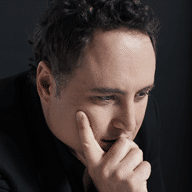gb&d: Why is sustainability important?
Chad Oppenheim: Sustainability is a tricky word because ‘to sustain’ really means ‘to keep the same.’ What we’re trying to do with our work is to be regenerative, more restorative, so that the buildings are actually giving back to the environment and creating habitats.
gb&d: How did you come to sustainable, or regenerative design?
Oppenheim: I became interested when I was seven years old. My parents were building a house in the midst of an energy crisis, so they planned to put in a windmill and some solar panels. Unfortunately, our neighbors didn’t like the windmill too much. Another time was in 1992. I built an earthship out in New Mexico under this maverick environmental architect named Michael Reynolds. It kind of triggered that we can design in a way that is more sensitive and really be one with the land. I want architecture to not only revere nature but hopefully also help nature, because over the years, we have destroyed nature for our benefit.
gb&d: Your Cor Building is known for it’s obviously sustainable design. How do you want the visible design of a building to bring awareness of the environment?
Oppenheim: That building has become a bit of a poster child for green architecture, but for me, the idea was just to make the most ecologically responsible building for that site. This building had to be designed holistically; things aren’t clipped-on or green-washed. Typically, in an urban condition, [green aspects] have to be more visible just because the buildings are taller. When we’re doing them in a rural setting, we want to really hide them so they don’t become visible, and then we try to hide the buildings so they aren’t visible either. It’s really contingent on the building and the location.
gb&d: How else does the physical environment of a project shape your design process?
Oppenheim: It’s what shapes it the most. We study the development of civilizations. I know it sounds kind of lofty, but we try to see how the first people inhabited these regions and built structures from the land, and we try to be inspired by them. Before technology, air-conditioning, climate-control, and heat, these people were able to live in relative comfort with just ingenuity—not technology. And then we study the climate, where the sun rises and sets. The site and the context is of prime importance to us and really the genesis of all our design moves.
gb&d: And living in Miami—how has that changed your design perception and ideas about the environment?
Oppenheim: Miami is a great place in that it’s a city that has been about enhanced lifestyle since its conception. That has been the focus of all design and all development in the city. The city’s very ethos has always been about creating a better way of living. The idea of creating this lifestyle has also become a basis of our work in that we are really designing for experience than merely what a building looks like. Being able to create an entire environment or atmosphere beyond the architecture has been a very important part of our work.
gb&d: Do you carry that aesthetic to projects in other cities then?
Oppenheim: I would say its more of a philosophy of living than an aesthetic. It’s how you do it and how you create the sensorial experience that is what you’re going to remember, and the architecture doesn’t have to be complicated to be interesting or pleasurable. In fact, sometimes the more elemental and recessive the architecture can be, the more pleasurable the experience is.
gb&d: What is the best advice you’ve been given as an architect?
Oppenheim: Every couple years I read The Fountainhead, Ayn Rand’s epic novel, and I try to think, “What would Howard Roark do?” He is very true to himself, and he pursues his dreams because of his passion.
gb&d: What about advice for others?
Oppenheim: You have to love what you do. You have to be really passionate about it and have a philosophy that you can really support and chase after. We have a really cathartic and extensive process that we go through when we design a building. It’s almost anthropological in that we’re kind of uncovering the answer in an intense study of the site, intense investigations in the history of architecture. It’s a journey. And it’s the built environment; we need to make sure that what surrounds us is beautiful and helpful to people and moving society forward in a good way.
gb&d: Your buildings have so much creativity in the design. We’re curious, how do you push through a creative block?
Oppenheim: [Our creative process] is pursuing with great vigor whatever we think is the best solution. We keep investigating, and we keep going until we find what we’re looking for. We don’t know where it is, and many times we don’t even know if we’re going to find it (laughs). It’s very rare that we find it right away. It’s more, “Holy crap, how are we ever going to find this solution?” And we just keep going, stay optimistic, and it usually happens toward the end.

